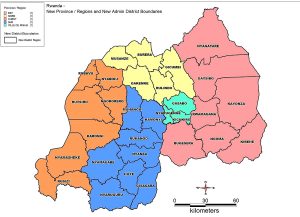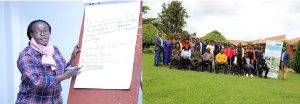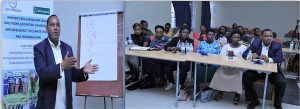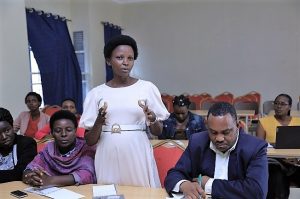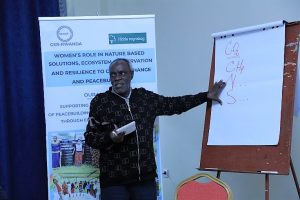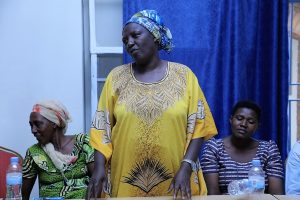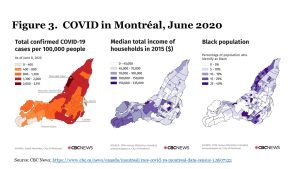Any concerted efforts to break the wall will trustily pave the way for ensuring, on non-discriminatory basis, fair and healty lives for all in the near future. Indeed, while conflicting points remain challenging issues to be addressed, they can be however. As the old saying goes ‘where there’s a will, there’s a way’

By Daniele Dionisio
PEAH – Policies for Equitable Access to Health
Not Utopia: Healthy Lives for All in Post-Pandemic World
The empty glass
In my Damn Covid Pandemic, Let’s Begin Exploiting You For Fairer World dating back a couple of years ago, I wondered at some point which lessons have we learnt from Covid pandemic. The answer was ….how countries cope and invest for their future during and after Covid-19 will determine the recovering and coming back to what we used to know as “our normal lives”. Meaning that the present time is the opportunity countries’ governments have to take and move forward social support to fairly sustain their vulnerable groups, as well as to support the productive sector with financial incentives and equitable measures. As inalienable pre-condition, this ties to awareness that ‘In the current pandemic scenario, public health experts need to look at the establishment of animal health care and the strengthening of an ecosystem where human and animal will live congruently to protect human health. This integrated, holistic and harmonious approach to protecting human health is referred to as one world one health, a name coined by the wildlife conservation society. A better understanding of the ecosystem is needed to protect public health’.
This position has gained consensus over time as in WHO’s just released Quadripartite call to action for One Health for a safer world
Yet, in today’s post-pandemic world I maintain that humankind is required, at government, corporate and civil society levels, to set green economy in motion first, while managing to curb inequalities and inequities throughout poor and rich nations. Actually, as per UN Secretary-General António Guterres ‘Everything we do during and after this crisis [Covid pandemic, Author’s note] must be with a strong focus on building more equal, inclusive and sustainable economies and societies that are more resilient in the face of pandemics, climate change, and the many other global challenges we face’.
Echoing George Lueddeke’s words, ‘The greatest challenge in our path to building more equal, inclusive and sustainable economies and societies…. lies with making a fundamental paradigm or mindshift from seeing the world through a strictly human-centric lens to taking a wider more inclusive eco-centric view – ensuring the needs of humans are compatible with the needs of our ecosystems.’
Relevantly, my aforementioned piece also put the finger in ‘the wound that will not heal’, wherein non-stop multi-sector engagement worldwide is required to pressure governments into making “U-turn” changes, implementing common measures on shared agenda. Really hard bet in these times of neoliberal globalization underpinning unfettered trade liberalization, where collusion of national-transnational corporations with their political counterparts comes as no surprise.
As per Ted Schrecker’s Globalization and health: Now more than ever, a need for scepticism and multidisciplinarity …Globalization of financial markets has not only multiplied opportunities for fiscally debilitating tax avoidance and capital flight, which among other consequences undermine social protection measures and progress towards universal health coverage, but also facilitated recurring debt crises in the developing world. The most recent such crises …. compromised many responses to the Covid-19 pandemic, and are squeezing already straitened low- and middle-income health budgets.
Sadly, a sense of fustration is inevitable when considering all conflicting resolutions and moves laid down in the global arena, with the result that public health interest almost regularly succumbs to the interest of the powerful.
Some light in this pessimism? Unfortunately, at a time when some step forward has been attempted, e.g. with Pandemic Treaty ‘Zero-Draft’ as a silver lining towards more inclusive, equitable directions for care, treatments and health technologies access for all, I wouldn’t put my hands on fire since I know how things go and fear that the ‘empire’ will strike back time and again.
Pessimism includes reservations at least (if not negative judgment) on the impact of the so-called public-private partnerships (PPs), wherein … communities had been ignored, displaced, and had their basic rights violated by thoughtless projects designed and implemented in the pursuit of profit…Market-based models cannot be relied upon to deliver on human rights or the fight against inequalities as they are accountable only to their shareholders and not to their users.
Yet, it is not entirely hopeless
Paving the way for half-full glass
Despite it all, I still keep optimist while being aware that food for thought by tips from press worldwide can help see the glass half-full against the odds. A few examples just to let readers in on my vision. To begin with, forward-looking sentences drawn from T20 Indonesia 2022 Policy Brief (pasted below) caught up my interest most:
Roll-out of accepted medical technologies and other public health interventions needs to reach all populations within countries and roll-out should be effective and efficient, equitably distributed and acceptable to both users and providers. This has not been achieved to date in the roll-out of COVID-19 vaccines, with lower coverage rates in rural areas compared to urban ones, and high income versus LMICs respectively.
Any future agreements ought to include obligations on countries to acquire intellectual property rights that can be used in the public interest during a pandemic and to share those rights with other members, which are part of the pandemic preparedness and response efforts.
Regulatory approval and policy development needs to be done in a timely manner. The current access pathway for tests is too long.
Countries should each develop a connected diagnostic system that starts from the National Reference Laboratories, down to community-based testing and self-testing. This should be part of the backbone of any healthcare system, to provide early alerts of unusual trends, enabling rapid deployment of public health measures, as well as monitoring the effectiveness of disease control interventions. Such a surveillance system should also be applied to other diseases that are not necessarily of an epidemic or pandemic nature.
Considering past pandemics, as soon as many were considered to be ‘over’, the world fell into a cycle of neglect and was surprised by the next pandemic, which raised similar issues and challenges. The G20 High Level Panel (Ministero dell’Economia e delle, 2021), set up a new financial intermediary fund (FIF) as part of Pandemic Prevention Preparedness and Response (PPPR) led by the WHO and World Bank (World Health Organization, 2021 & The World Bank, 2022). FIF works closely with donor partners, while engaging widely with other stakeholders, including governments and civil society. PPPR can also serve as a platform for advocacy as it is designed to operate as flexibly as possible. The FIF brings additional dedicated resources for PPPR to LMICs, to allow for investments to be made at national, regional and global levels. Channeling these funds will incentivize countries to make their own investments: about a third of annual FIF funding is anticipated to be provided through external financing, with the remaining two-thirds coming from domestic resources through country commitments.
Despite all the promises and the existence of the TRIPS Agreement, which is meant to deal with such public health emergencies, what we saw in 2021 and 2022 was a situation of ‘vaccine apartheid’, and now we have, what some refer to as ‘treatment and diagnostic apartheid’.
In 2022, the UN Human Rights Council passed a resolution that access to medical technologies is the right of everyone for the enjoyment of the highest attainable standard of physical and mental health (OHCHR, 2022). Unfortunately, if governments insist on not using available flexibilities, which are contained in the TRIPS declaration or partially covered on the 17th of June WTO deal, countries may not achieve access to medical technologies.
Equally, I was positively impressed by what highlighted and requested early this year in Taking on the Commercial Determinants of Health at the level of actors, practices and systems Excerpts as follows:
Evidence has been accumulating for decades on how the Commercial Determinants of Health (CDoH) undermine health equity, and it is increasingly clear that they threaten progress across the health-related Sustainable Development Goals (SDGs).
Box 1. Illustrative commercial actor practices which influence health
Market: Poorly regulated “buy now pay later” companies (e.g., AfterPay, Zip, Affirm, and others) have been criticized for predatory marketing linked to rising consumer debt—the industry includes retail, healthcare and housing.
Political: Google has more than 258 instances of “revolving door” activity in the United States, including White House officials, the Department of Justice and the Federal Trade Commission—the same agencies tasked with investigating antitrust.
Scientific: Coca-Cola and the International Life Sciences Institute have funded research to support the soft drink industry’s message that physical activity, not diets, is the key driver of obesity.
Employment: The commercialization of the incarceration system, often referred to as the Prison Industrial Complex, has led to the exploitation of often minority populations for dangerous and virtually unpaid labor, while migrant workers and their children are subject to violence, abuse, hazardous living conditions and have limited access to healthcare and education.
Financial: The “Big Four” accounting firms—PwC, Deloitte, KPMG and EY—play a significant role in defending and enabling systematic tax avoidance, which depletes public resources that might otherwise be used to promote public health.
Box 2. Approaches to tackle CDoH at the levels of actors, practices and systems
Actors
- Implement taxes on tobacco, alcohol, and sugary drinks or other health-harming products.
- Restrict predatory marketing and implement front-of-pack warning labels on tobacco, alcohol and ultra-processed foods.
Practices
- Mandate employee benefits (including paid parental leave, unemployment benefits and sick leave), including for casual and contract workers.
- Regulate profit repatriation, where a parent company avoids paying taxes in its own jurisdiction by first shifting profits to one of its subsidies in a low-tax jurisdiction and then “lending” its parent company back the same money.
Systems
- Develop and enforce strict transparency and disclosure requirements for public servants and politicians at all levels of government about engagement with commercial actors, e.g., real-time disclosure of political donations, gifts, hospitality and meetings with government officials.
- Implement progressive corporate taxation, wealth or “solidarity” taxes to more equitably redistribute wealth.
- Earmark corporate taxes to support public goods, e.g., research, independent media, etc.
- Mandate greater human rights accountability on TNCs for exploitative labor practices and environmental degradation.
- Develop and enforce rigorous conflict of interest (COI) standards for engagement with commercial and quasi commercial actors, including regulation governing the revolving door.
- Use antitrust suits to break up monopoly industries (for example, the technology industry in US).
- Embed a health lens in investment decisions—Tobacco Free Portfolios is one example, which could be expanded to incorporate other health and equity metrics.
- Establish an intergovernmental tax commission to negotiate a global minimum tax floor to address the “race to the bottom” where countries sacrifice environmental standards and human rights in pursuit of lucrative investments.
- Implement and enforce existing access and benefit sharing mechanisms (such as the Nagoya Protocol and the Pandemic Influenza Preparedness Framework) to ensure that intellectual property is not protected at the expense of national sovereignty, equitable access to vaccines, or other “benefits.”
- (Re)municipalize public goods and services such as water, energy, the postal system, etc.
Box 3. Priority actions to advance a CDoH agenda
Governments: Develop a five-year strategy for action on CDoH with list of priorities for a multisector program of work.
Multilaterals: Rebalance participation in governance fora to ensure actors from civil society organizations and the Global South have a voice.
Civil society: Build coalitions and foster public support for ambitious and effective government regulation of CDoH.
Researchers: Expand our understanding of the system-level dynamics enabling CDoH—including opportunities to shift these to foster health promoting forms of commerce and share this evidence widely outside academic publications.
WHO: Develop technical guidance on COIs for governments, multilaterals, NGOs, and others that encompasses commercial and quasi-commercial actors.
On a similar wavelength, the newly published A Renewed International Cooperation/Partnership Framework in the XXIst Century maintains that …in order to progress to lower global inequities and achieve a carbon neutral world by the mid of the century and so prevent a climate disaster for the next generation, a greater focus is required on rural vs local, collaboration vs. competition, justice vs. market access to right-based universal social services and a shift from military spending to exhaust all peace agreements and fund a meaningful collaboration according to capacities and needs.
Adding to what emphasized so far, plenty of forward-looking suggestions are being offered throughout current literature, whereby just as an example …A clear vision for a wellbeing economy within planetary boundaries that considers international solidarity and social justice will have to guide the development of future health systems.
This encompasses the need of sustainable finance for health systems , without forgetting that …The objectives of global health depend on the discipline’s capacity to create more space for those we exclude as they lean into existing strengths, hold social institutions accountable and effectively mobilise to advocate for their preferred solutions.



